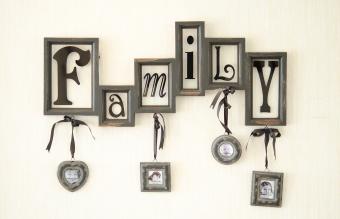
There are so many ways you can decorate a kid's room; you just have to turn your imagination loose. To get started, consider paint color schemes, paint combinations, painting techniques and designs that are best suited for children décors.
Wall Paint Color Schemes for Kids
Coming up with a color scheme for your child's room can be easy when you first establish a few specifics.

Select a Cool Theme
Select a theme for your overall room design to help narrow your paint choices. Perhaps your child has a certain hobby or interest. Some themes have their own color palette. For example, a budding scientist may prefer a space theme or an ultra-technology themed room. Your child artist may prefer bolder and more exaggerated and creative room designs.
- Dinosaur theme colors: Brown, gray, sky blue, large green foliage, orange and red lava spewing volcanoes
- Science theme colors: Industrial steel gray, cosmos blue and silver, white stars and planetary colors
- Artist theme colors: Vivid primary colors of red, yellow and blue, and a wide range of hues
- Girl theme colors: Pink, yellow and white are go-to colors for little girls. Purple and green also make great color choices for a girl's room.
- Boy theme colors: Masculine colors, such as brown, blue, green, orange and gray fit the boy theme that's often focused on cars, trucks, sports and tools.
- Gender neutral theme colors: Yellow, green and brown make excellent non-gender choices for paint colors.
Painting With Color Combination Style

You can choose a style for your child's room that will match your child's personality and interests. For example, a sports enthusiast may want sports symbols, sports collection paraphernalia and a trophy display.
You can paint various sports logos on the wall using a stencil either in a lighter or darker paint color. If your sports hero has trophies to display, you can designate a specific display area by using an accent wall color to highlight the display wall. Add some floating shelves and you have a great spotlight for these earned rewards. This idea will work for any theme bedroom design for either gender.
Complementary Colors

Complementary colors are the colors opposite each other on a color wheel. These two colors truly complement each other and make great color scheme choices. These combinations can be used for either gender or for a gender neutral room design.
- Red and Green: A sophisticated red and green room is gender neutral and makes a striking room design. Paint three walls green and an accent wall in red. Go as light or as dark in hues as you like.
- Blue and Orange: A blue and orange room does more than just pop - it energizes. Select one of the colors for three walls and the other one will be used on your accent wall. These are great colors for a sports themed room.
- Yellow and Purple: Nothing says posh better than the combination of yellow and purple. Select one for the accent wall and begin decorating. You may want to stencil polka dots on the accent wall using the color you selected for the other three walls or go with a cool stencil design.
Painting Techniques
Some of the easiest ways to create a unique and interesting kids room is with painting techniques. Two favorite techniques are stripes and stencils. If you are especially daring, enlist the help of your children to use several colors to press their hand prints on the wall. This can be done randomly or to form a hand-print horizontal stripe on one or all walls.
Paint Vertical or Horizontal Stripes
You can either go vertical or horizontal with your stripes. One technique is to alternate with a flat stripe and glossy stripe sequence. For a subtle stripe, select two hues of your child's favorite color, one lighter than the other.
If you want a dramatic stripe effect, you can go with more than two hues or colors. And, yet another technique is to vary the width of the stripes, such as a wide green stripe, a narrow pink stripe and a wide green stripe.
For horizontal stripes, you may wish to go for a dramatic effect using only three stripes of varying widths and different colors or use subtle colors and paint the entire wall in stripes.
Tips for painting stripes:
- Careful measuring means nice straight lines.
- Apply a base coat of one of the stripe colors you wish to use such as a light green.
- Allow base coat to dry for 24-48 hours.
- For best visual effect stripes should be between 4-12 inches wide.
Stenciling Designs

Another great painting technique that is very inexpensive is stenciling. These can be large stencils designed to cover an entire wall, create borders, medallions or randomly placed stencils, such as flowers, butterflies, animals and other iconic images. Select your base wall color for the bedroom and then the accent color(s) for your stenciling project.
Tips for stenciling walls:
- Make sure the base paint on your wall is dry.
- Flat tipped and dome stencil brushes are the most commonly used.
- Use painters tape to secure stencil to wall.
- Stippling technique requires tapping or dabbing paint against the stencil.
- Swirling technique requires moving brush in circular motions.
- Carefully lift stencil from the wall so as not to smudge paint.
Making Use of Color Charts
Most paint manufacturers provide customers with paint charts designed to help make color selections easy. Companies like Sherwin-Williams, Benjamin Moore and BEHR also feature online paint charts. Some provide an online program that allows you to upload a photo of your room to try different paint colors virtually. These tools can ensure you make paint choices you'll be happy with and your kids will love.







